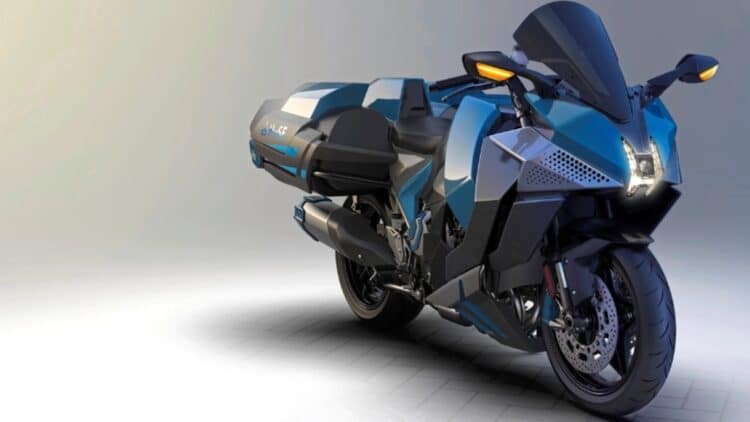Kawasaki’s hydrogen Ninja made its debut, and perhaps this debut was so as to signify that the retrieval of the combustion engine is not the brand’s only secret. With battery-powered bikes gaining attention, Kawasaki is here to prove that internal combustion can still make waves without the harmful emissions. It was at the legendary 2025 24 Hours of Le Mans Motos that Kawasaki unveiled this H2 HySE, which has also been called the hydrogen Ninja.
Some of the secrets unveiled by the HySE Project
Yes, Kawasaki not only focused on internal combustion, but also turned its attention to hydrogen in an all-new way. While hydrogen is usually used in a fuel cell to generate electricity, the HySE (Hydrogen Small mobility & Engine technology), burns hydrogen in the motorcycle directly in its internal combustion engine. While ensuring a cleaner future, the iconic motorbike roar is still achieved.
Being built on the Ninja ZX-10RR foundation, this hydrogen-powered H2 HySE retains that engine characteristic that motorbike riders love. Running on compressed hydrogen gas captured in high-pressure tanks found at the rear of the bike, the motorbike releases nothing but harmless water vapor.
One of the secrets that Kawasaki is keeping is that this motorcycle giant has also joined forces with Honda, Yamaha, Suzuki, and Toyota, all of whom are exploring how hydrogen can extend the life of combustion-based vehicles in a zero-emissions world.
A silent debut, but the motorcycle roars loudly
Kawasaki H2 HySE made its debut at the 2025 24 Hours of Le Mans Motos when the motorcycle made a solo lap on the Bugatti circuit just before the race started. It was rider, Matthias Höppner, who piloted this machine, driving through wetter conditions and creating history for being one of the very first hydrogen-combustion motorcycles to be able to handle this French track.
Höppner was rather positive after the experience, labelling the entire experience as good. While the ride surely caught the attention of the public, the aim was to share the message that it is possible to adopt a cleaner stance in the motorcycling realm.
Although silently stealing the show, the bike made its appearance during the 2024 Suzuka 8 Hours and at the 2025 24 Hours of Le Mans Motos, showcasing what alternatives are possible with the combustion engine and thrilling the public with all that riding potential could mean in a cleaner future.
Back in 2024, Kawasaki surprised all with the first hydrogen vehicle; however, the brand’s newest unveiling is even more surprising and looks at internal combustion engines along with hydrogen.
The road ahead for the HySE bike
While the HySE bike was able to steal the show silently, delivering this bike to the public comes with its own set of challenges, including that of hydrogen storage. While the prototype proved successful, this bike is not ready for the showroom just yet. Hydrogen gas will need to be compressed to 400 bars and kept in large tanks.
The true secret behind this bike by Kawasaki is that it is meant to be a mere prototype for now. It is not ready for release as it is still part of ongoing research to indicate what the future of hydrogen combustion engines could mean for all motorcycle drivers. Hydrogen motorcycles could surely define the future of riding whilst achieving the balance between performance, safety, and sustainability.
For riders who believed that combustion engines would mean sacrificing performance, Kawasaki proved that hydrogen combustion means cutting no corners in terms of performance. Similar to MIT’s 100% American motorcycle, which is a clean-combustion prototype, Kawasaki’s prototype is meant to make a statement for now. Yes, the road ahead to creating a HySE bike that is showroom-ready is marked by hurdles, but Kawasaki has shown it is ready for the challenges that lie on the road ahead.


